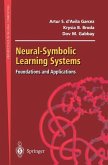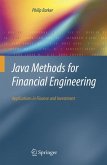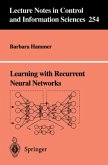This volume looks at financial prediction from a broad range of perspectives. It covers: - the economic arguments - the practicalities of the markets - how predictions are used - how predictions are made - how predictions are turned into something usable (asset locations) It combines a discussion of standard theory with state-of-the-art material on a wide range of information processing techniques as applied to cutting-edge financial problems. All the techniques are demonstrated with real examples using actual market data, and show that it is possible to extract information from very noisy, sparse data sets. Aimed primarily at researchers in financial prediction, time series analysis and information processing, this book will also be of interest to quantitative fund managers and other professionals involved in financial prediction.
This is abook about the methods developed byour research team,over a period of 10years, for predicting financial market returns. Thework began in late 1991,at a time when one ofus (Jimmy Shadbolt) had just completed a rewrite of the software used at Econostat by the economics team for medium-term trend prediction of economic indica tors.Looking for anewproject,itwassuggestedthatwelook atnon-linear modelling of financial markets, and that a good place to start might be with neural networks. One small caveat should be added before we start: we use the terms "prediction" and "prediction model" throughout the book, although, with only such a small amount of information being extracted about future performance, can we really claim to be building predictors at all? Some might saythat the future ofmarkets, especially one month ahead, is too dim to perceive. We think we can claim to "predict" for two reasons. Firstlywedoindeedpredictafewper cent offuturevalues ofcertainassets in terms ofpast values ofcertainindicators, asshown by our trackrecord. Secondly, we use standard and in-house prediction methods that are purely quantitative. Weallow no subjective viewto alter what the models tell us. Thus weare doing prediction, even if the problem isvery hard. So while we could throughout the book talk about "getting a better view of the future" or some such euphemism, we would not be correctly describing what it isweare actually doing. Weare indeed getting abetter view of the future, by using prediction methods.
Hinweis: Dieser Artikel kann nur an eine deutsche Lieferadresse ausgeliefert werden.
This is abook about the methods developed byour research team,over a period of 10years, for predicting financial market returns. Thework began in late 1991,at a time when one ofus (Jimmy Shadbolt) had just completed a rewrite of the software used at Econostat by the economics team for medium-term trend prediction of economic indica tors.Looking for anewproject,itwassuggestedthatwelook atnon-linear modelling of financial markets, and that a good place to start might be with neural networks. One small caveat should be added before we start: we use the terms "prediction" and "prediction model" throughout the book, although, with only such a small amount of information being extracted about future performance, can we really claim to be building predictors at all? Some might saythat the future ofmarkets, especially one month ahead, is too dim to perceive. We think we can claim to "predict" for two reasons. Firstlywedoindeedpredictafewper cent offuturevalues ofcertainassets in terms ofpast values ofcertainindicators, asshown by our trackrecord. Secondly, we use standard and in-house prediction methods that are purely quantitative. Weallow no subjective viewto alter what the models tell us. Thus weare doing prediction, even if the problem isvery hard. So while we could throughout the book talk about "getting a better view of the future" or some such euphemism, we would not be correctly describing what it isweare actually doing. Weare indeed getting abetter view of the future, by using prediction methods.
Hinweis: Dieser Artikel kann nur an eine deutsche Lieferadresse ausgeliefert werden.








